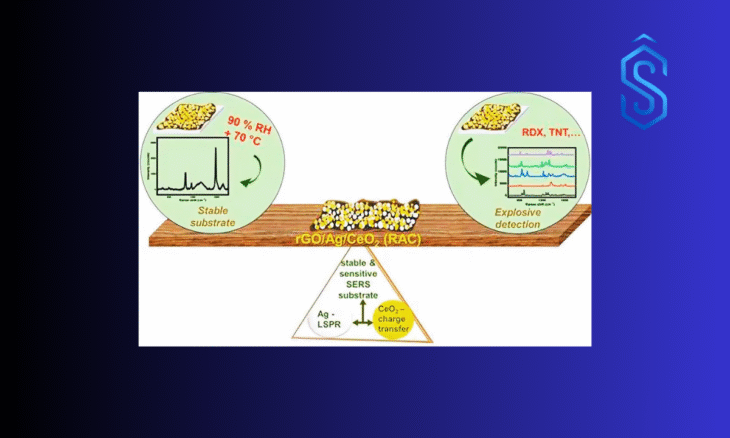New Delhi: In a breakthrough that could revolutionize explosive detection and environmental safety, researchers from the Centre for Nano and Soft Matter Sciences (CeNS), an autonomous institute under the Department of Science and Technology (DST), have developed multi-layered smart nano-materials capable of detecting dangerous chemicals like TNT and RDX at nanomolar concentrations.
Utilizing Surface-Enhanced Raman Spectroscopy (SERS), a technique known for its exceptional sensitivity, the team designed a robust and scalable sensing platform that integrates reduced graphene oxide (rGO), silver nanoparticles (AgNPs), and cerium oxide (CeO₂) onto a glass substrate.
Also Read: CSIR-NCL and Covestro Partner for Breakthrough in Polyurethane Upcycling
This carefully engineered “sandwich” structure maximizes signal amplification while enhancing material durability and detection accuracy.
Silver nanoparticles traditionally used in SERS are susceptible to oxidation, limiting long-term use. However, the cerium oxide coating addresses this challenge by both enhancing charge transfer and acting as a protective shield against humidity and high temperatures.
Meanwhile, rGO suppresses background fluorescence, allowing for a clearer Raman signal.
Also Read: Indian Navy Warship Design Bureau to Host National Seminar on Shipbuilding in Delhi
The nano-composite maintained performance in extreme conditions – 90% humidity and 70°C – highlighting its potential for real-world applications.
The team demonstrated trace detection capabilities using 4-mercaptobenzoic acid (MBA) and successfully identified a variety of explosives, reaffirming the platform’s effectiveness.
Smart Nano-Materials Could Play Pivotal Role
With its high sensitivity, low-cost fabrication, and durability, this advanced smart nano-materials could play a pivotal role in airport security, counter-terrorism efforts, and environmental pollution monitoring, where rapid and reliable chemical detection is critical.










